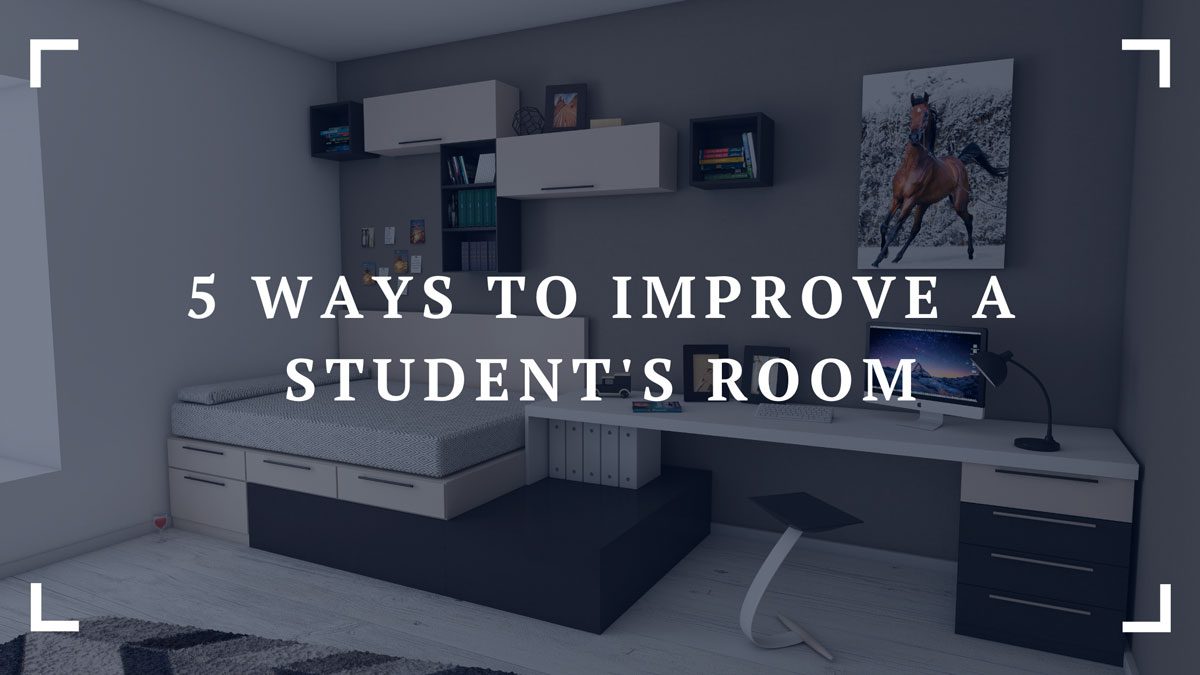For students, a room is more than just a place to sleep. It’s a study hub, a personal retreat, and a space where they spend significant time. Creating an environment that caters to relaxation, effective studying, and personal expression. Here are five ways to transform a student’s room into a multifunctional and comfortable haven.

Why Is A Student’s Room Important For Studying
A student’s room plays a crucial role in their academic success. It’s a personal sanctuary where focus and productivity must coexist with comfort and relaxation. This space, often a haven from the outside world’s distractions, is where students spend countless hours absorbing knowledge, brainstorming ideas, and working on assignments. A student’s room environment can significantly impact their concentration and study efficiency. A well-organized, adequately lit room with a dedicated study area encourages a mindset geared towards effective learning. Another thing that can aid with effective learning is academized.com. This is a site that offers academic writing of any difficulty.
A student’s room is also a place for rest and rejuvenation, essential for maintaining the mental and physical energy required for academic pursuits. Therefore, a student’s room is not just a physical space; it’s a crucial component in the educational journey, influencing the quality of study and overall well-being.
5 Easy Ways to Improve a Student’s Room For Effective Learning
1. Optimize the Study Area
The cornerstone of a student’s room is the study area. This space needs to be both functional and inviting to encourage productivity. Start by choosing a desk with ample space for books, a laptop, and necessary supplies. Ergonomics is key – a comfortable, supportive chair and a desk at the right height can prevent physical strain during long study sessions. Lighting plays a crucial role, too; a well-lit workspace is essential for reading and writing. Natural light is ideal, but a good desk lamp can make a big difference, especially during evening study sessions. Keeping this area clutter-free and organized will also help maintain focus and motivation.
2. Create Efficient Storage Solutions
Efficient storage solutions are vital in a student’s room, especially when space is limited. Utilizing multi-functional furniture, like a bed with built-in drawers or a desk with ample shelving, can maximize space and minimize clutter. Wall-mounted shelves are great for books, while storage bins can neatly tuck away less frequently used items. A well-organized room not only looks better but also makes it easier to find things, saving time and reducing stress. Remember, a tidy space equates to a tidy mind, which is particularly important in a learning environment.
3. Ensure a Comfortable Sleeping Area
Quality sleep is essential for academic success and overall well-being. Therefore, creating a comfortable and relaxing sleeping area is critical. Invest in a good mattress and pillows that provide the right support. Quality bedding can also enhance sleep quality. The room’s colour palette can influence relaxation; choose calming and soothing colors for bed linens and curtains. If possible, try to separate the sleeping area from the study area, either physically or visually. This helps create a mental division between rest and work, improving sleep quality and study effectiveness.
4. Personalize the Space
A room should reflect the personality and interests of its occupant. Personalizing the space can make it feel more comfortable and inviting. This can be done in various ways, such as hanging posters, displaying photos, adding plants, or using decorative lights. These personal touches make the space more enjoyable and provide a sense of ownership and comfort. However, avoiding over-cluttering the room is important, as too many items can be distracting and make the space feel cramped.
5. Maintain Good Air Quality and Lighting
Good air quality and proper lighting are often overlooked aspects of a student’s room, but they are vital for health and productivity. Ensure the room is well-ventilated; fresh air can help to keep the mind sharp and alert. If opening a window isn’t an option, consider an air purifier. A combination of natural and artificial light sources works best in terms of lighting. During the day, maximize natural light as it boosts mood and focus. Use warmer, softer lighting in the evening to create a relaxed atmosphere. Good lighting can reduce eye strain during study sessions and help maintain a regular sleep pattern.
In Conclusion
Transforming a student’s room into a space that supports studying, relaxation, and personal expression can greatly enhance their academic journey and overall quality of life. A student’s room can become a productive and enjoyable environment by optimizing the study area, creating efficient storage, ensuring a comfortable sleeping area, personalizing the space, and maintaining good air quality and lighting. Remember, a well-designed room can significantly affect a student’s success and well-being.


